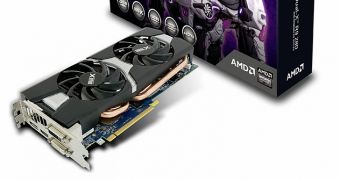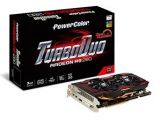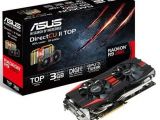Advanced Micro Devices formally launched the Radeon R9 280 graphics card the other day so, naturally, its various partners are introducing their respective custom-cooled and tweaked models.
Here we will take a look at the video cards that AMD's partners ASUS, PowerColor, and Sapphire launched over the past day.
First off, ASUS. The company has created two boards, both bearing the DirectCU II logo due to their cooling modules.
As one may expect, the only difference between the video cards lies in the frequencies of the graphics processing units (GPU).
The “normal” DirectCU has clocks of 827 MHz and 874 MHz (GPU Base / GPU Boost), and 5 GHz for the 3 GB of GDDR5 VRAM.
The other card, called ASYS Radeon R9 280 DirectCU TOP, works at 874 MHZ and 980 MHz for the GPU, and 5.2 GHz for the memory.
Sapphire has one card of its own, called R9 280 Dual-X. Granted, the company also has a new 280X (the 280X Vapor-X), but we'll see to that one later.
The card is factory overclocked, working at 850 MHz and 940 MHz with Boost, though the VRAM is left alone at 5 GHz.
Also, the cooler is a grey and white thing with thick copper heatpipes and two fans dispersing whatever heat would otherwise be accumulated. Sapphire calls the main assets here “two aerofoil fans” and “graduated heatpipes.”
As for PowerColor, the company, like Sapphire, only has one Radeon R9 280 video board to introduce, called TurboDuo R9 280 OC.
Out of all the newcomers, it is the fastest, with a base GPU speed of 855 MHz and a Boost maximum of 960 MHz. The memory sticks to the normal 5 GHz though.
So we suppose that ASUS is the only one of these three that actually tweaked the VRAM frequency to any extent.
Anyway, all the cards are otherwise similar. Granted, their PCBs are shaped and colored differently, and all three companies have their own, favored components (like capacitors and BIOS chips), but the core of it all is the same: the Tahiti GPU with 1,792 stream processors, 112 TMUs (texture mapping units), 32 ROPs (raster operating units), and a 384-bit wide GDDR5 memory interface.
The price should be of $279 / €279 or a bit above that mark for the factory-overclocked ones. The box contents and accompanying software will have an effect on the final tag as well but, ultimately, the difference should not be all that major.

 14 DAY TRIAL //
14 DAY TRIAL // 

